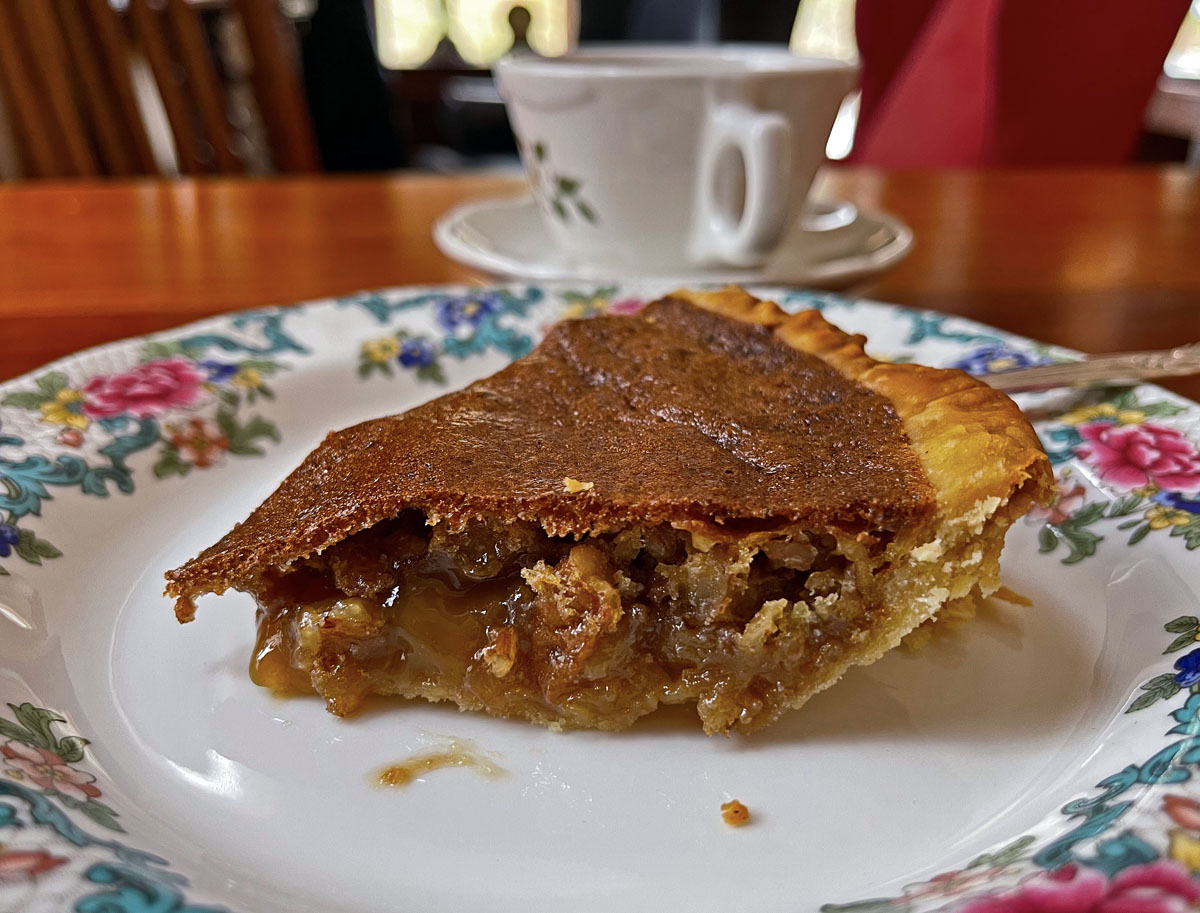
This was the first pecan pie I’ve ever made. It also was the most challenging pie I’ve ever made.
The problem was in figuring out when the pie was done. Erma Rombauer, in the 1943 edition of The Joy of Cooking, calls for 375 degrees for 30 minutes. That was not enough. The pie came out of the oven runny in the middle. I had to put it back into the oven. I was afraid I’d ended up with a disaster. But I ended up with the best pie I’ve ever made.
There is a strange alchemy in pecan pie, unlike any pie I’ve ever made before. Corn syrup is an essential ingredient. I had never even bought corn syrup before, but of course I bought some for this pie. My guess is that the eggs and corn syrup interact in a magical way to create a translucent soft custard that caramelizes very quickly in the oven. That’s why it’s tempting to take the pie out of the oven too soon — the top browns so quickly. But the browning of the top is part of the alchemy — a thin, chewy-crunchy crust on top of the pie. As for the bottom crust, I used my regular recipe of olive oil and unbleached flour. Rombauer’s recipe called for pre-baking the crust, which I don’t usually do. What a difference! The crust was flakier, and the chewy texture of the pie melded with the flaky pie crust in an unexpected alchemical way. The effect was so sophisticated that I’d have sworn the pie came from a Paris pastry shop rather than my own oven.
Note to MHK: I forgot to add the coffee, but I will remember next time. There definitely will be a next time.
Cracking out the pecans was tedious, but I got that job done in about half an hour. I couldn’t find an authoritative history of the pecan pie, but the consensus seems to be that it originated in New Orleans, with French (and I suspect African, as well) influence. The pecan tree is native to the Southern United States. Those of you in Europe, I’m guessing, won’t be able to find pecans. But the alchemy of pecan pie could surely be achieved with any nuts that go well with pastry, such as walnuts. Do you have corn syrup in Europe? If not, my guess is that any thick syrup would do. Even molasses (treacle) probably would produce the same effect, though the flavor would be intense. Corn syrup, by comparison, has very little flavor on its own.
I very much doubt that Erma Rombauer’s recipe is her invention. Every basic recipe I’ve seen is pretty much the same. Compare Karo’s recipe. Note that Karo’s recipe calls for a longer bake and an internal temperature of 200 degrees. If I had read Karo’s recipe first, I probably would not have had to put my pie back into the oven.
Erma Rombauer, 1943:



David,
Your pie looks delicious. I am impressed with your first pecan pie. You’re inspiring me to make one for hubby’s birthday as pecan pie is his all-time favorite.
David – there was a bakery on the Caledonian Road in London which did some excellent Pecan Pie. I don’t know if its still there but they do have an amazing and distinctive taste.
Hi, Chenda: Why am I not surprised that pecan pie found its way to London and that you discovered it there? MHK emailed me a photo of a handwritten recipe from Alabama that ends with this wisdom: “Bake @ 350 until top of pie begins to crack and filling is set.”